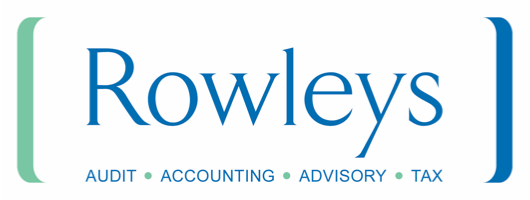News & Events
Upcoming changes to Statutory Sick Pay (SSP): Everything you need to know
14th October 2025
From 6 April 2026, new rules on Statutory Sick Pay (SSP) will come into force. These changes are designed to make SSP more inclusive and supportive, but they also increase employer responsibility and bring extra complexity for payroll and cash flow. Here, Rowley’s Payroll Manager, Rebecca Gotch breaks down the changes and explains the impact on employers so you can stay compliant and prepared for what’s to come.
Key changes you need to know
- Changes to Statutory Sick Pay (SSP) start day
From April next year, SSP will be payable from the very first day of sickness. The current “three waiting days” rule is being scrapped.
Impact for employers
You’ll be paying SSP sooner, even for short absences, so it’s worth modelling the potential increase in costs and checking your payroll software handles day-one entitlement automatically.
- The Lower Earnings Limit (LEL) test is no more
Moving forward, all employees, regardless of earnings, will qualify for SSP. Employees earning below the LEL will be paid as 80% of their average weekly earnings or the SSP base rate, whichever is lower.
Impact for employers
More staff will now be eligible, particularly part-time and casual workers. This could add administration and cost, so now is a good time to review contracts and absence management policies.
- Pay based on earnings comes into force
If an employee earns less than the flat SSP rate (£118.75 per week from April 2025), they won’t automatically receive the full flat rate. Instead, they will be paid 80% of their usual weekly earnings, up to the flat rate cap.
Impact for employers
More staff will now qualify for SSP which could increase overall costs. Employers will also need to ensure payroll systems can handle the new 80% earnings calculation and cap correctly.
Why are these changes being introduced to the Employment Rights Bill?
The government’s aim is to make Statutory Sick Pay (SSP) fairer and more accessible, particularly for low-paid and casual workers. At present, around 1.3 million employees miss out on SSP because they earn less than the Lower Earnings Limit.
But the reforms are about more than financial support. By ensuring all employees can afford to take time off when ill, the government also hopes to:
- Reduce presenteeism: Staff are less likely to work while unwell, lowering the risk of errors or accidents.
- Encourage full recovery: Employees return to work healthier and more productive.
- Limit the spread of illness: Especially important where teams work in close contact.
- Support staff morale and retention: Workers who feel protected are more likely to remain loyal to their employer.
In short, the changes are designed to benefit both employees and businesses, creating a healthier, more productive workforce.
Is your business ready?
With the reforms on the horizon, taking action now can save time, reduce stress, and protect your business. By reviewing payroll systems, updating contracts, and planning for increased eligibility and costs, employers can stay compliant, maintain smooth operations, and support staff effectively.
Failing to prepare, could lead to payroll errors, unexpected costs, and compliance issues, as well as potential disruption to workforce management. Getting ahead ensures your business can implement the changes seamlessly, avoid penalties, and foster a workforce that is healthy, motivated, and supported.
Our CIPP-qualified payroll experts manage all aspects of payroll. We can guide you through these changes and help put robust processes in place so you can be confident your payroll will continue to operate smoothly.
To find out more about our payroll services, please contact Rebecca Gotch, either by email: rebecca.gotch@rowleys.biz or call: 0116 282 7000.
A summary of changes coming into force in April 2026
| Feature | Current Rule | New rule (from 6 April 2026) |
| Waiting days (when SSP starts) | SSP becomes payable from the 4th qualifying day of sickness. The first 3 qualifying days are “waiting days.” | SSP payable from the very first day of sickness absence. |
| Lower Earnings Limit (LEL) | Employees must earn above a threshold (currently around £123/week) to qualify for SSP. Those earning less are not eligible. | Removal of the LEL: all employees will be eligible regardless of earnings. |
| Rate of SSP for low earners | Low earners (below LEL) either get nothing; for others the SSP flat rate applies. | For those earning below the old LEL, they will receive 80% of their normal weekly earnings, or the flat rate SSP (whichever is lower). |
| Flat SSP rate increase | The SSP flat rate (for those not using the percentage earnings formula) was due to rise. | The flat rate will be £118.75 per week from April 2025. |
